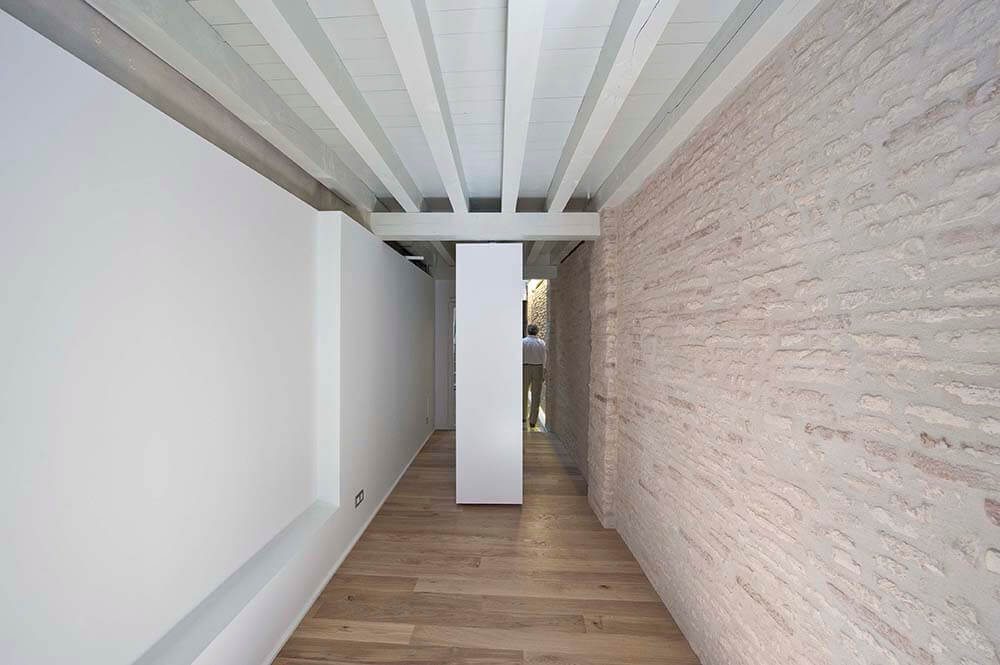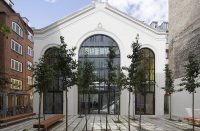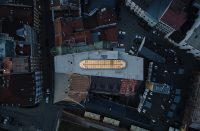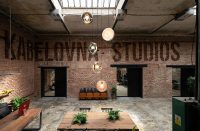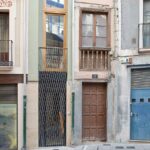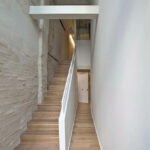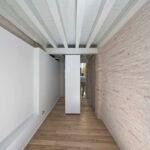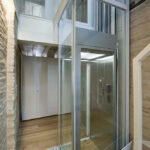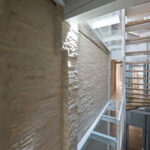Architect(s): Alfonso Alzugaray
Address: Calle Nueva, 15, PAMPLONA, Spain
Latitude/Longitude: 42.817803,-1.644177
Photographs: Luis Prieto
This is a project about the restoration of a building between two party walls defined by a medieval division into lots old town. The plot is stretched in order to light up in two parallel streets and around 19 meters far from each other. The minimal width of 2.20 meters makes it worthy of being qualified as “unagi no nedoko”, which are narrow residual plots in Japanese cities.
The dimensions, which are truly difficult to reconcile the strict rules of habitability required in any housing intervention, became the first appeal of the proposal. Although in such cases the idea of aggregation of plots is often used to obtain comfortably habitable dimensions, due to a series of administrative complications the owners had to investigate the possibilities of carrying out the process without taking into account the adjacent buildings.
Initially we obtained planning permission with a project that distributed two dwellings alternating thanks to flights of crossed stairs. However during the construction process suggestive cross views and transparencies from street to street became visible and made us, both technicians and owner, to work on a single block on five levels. As it is easy to understand, the only feasible distribution gave to the building a centered position of the stairs that enabled units to each side with lighting and also ventilation to each of the facades. The heart of the building is composed of the staircase, the glass paved walkway that enables good lighting to the whole central portion, and the small domestic elevator. These three elements solve the program with little added divisions and changing and attractive usage possibilities thanks to some mobile furnishing.
The project builds its image in the only constructive elements that defined the building: wood structure and brick party walls. These walls, which are hidden behind thick plaster layers, were recovered, cleaned and grouted with lime mortar in the well-preserved canvases. The project sought to show up the expressive power of this rough and uneven material facing lightness and smoothness of the new contributions, which are mostly metal and glass pieces and smooth surfaces that are painted white. Lighting also seeks to support those effects, so that the gradient light emphasizes the expressiveness of brick, while points of light, which are hidden in the wooden structure, emit light to the white surfaces enabling any lighting piece hanging below the structure.
Neatness of spaces is consequently shown up by setting value on the preexisting composition in front of the added elements. We are able to enjoy an entire volume basically defined by its powerful brick party walls.
Text description provided by the architects.
Surface built: 188m²
Constructor: Construcciones COMAL
Architect. colab: Leire Leoz
Quantity surveyor: Pedro Legarreta Nuin
Structure eng: FS estructuras
Contributed by Alfonso Alzugaray

